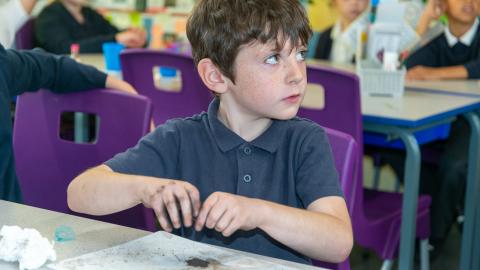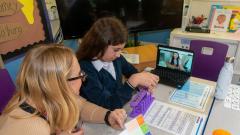What are SATs in the UK?
SATs are tests administered by primary schools in England to children in Year 2 and Year 6 to gauge their educational progress. They are one marker used by the government, and hence parents, of the quality of the education at a school. The setting and marking of SATs are carried out in UK schools by the Standards & Testing Agency.
KS1 SATs in Year 2
In May, children will sit their KS1 SATs in:
- Reading
- Maths
They will also be assessed by their teacher on science, writing, and speaking and listening. This however is known as the teacher assessment, and it is not an official score for the SATs or national assessments.
From September 2023, the Standards and Testing Agency have announced that the end of Year 2 tests will no longer be statutory and will become optional tools for assessment at primary schools.
KS2 SATs in Year 6
In Year 6 SATs are a more formal process of testing, and children will sit KS2 SATs in:
- English Reading
- English Grammar
- Punctuation
- Spelling
- Maths
They will also be assessed by their teachers on subjects including speaking and listening, writing and, in some cases, science.
By using teacher assessment, schools and the government are able to judge a child’s performance in a subject over a longer period of time.This means that teachers are able to account for a child’s whole knowledge and ability in a subject, not just that which comes to the fore in a test environment.
What does SATs stand for?
SATs stands for Standard Assessment Tests.
SATs may be a common acronym that is used on many websites and in most school communications regarding the tests, but there are also a number of others phrases that your child’s teacher may use when discussing the SATs.
Here are some of the most common examples dissected so that you’ll know your scaled score from your national standard come SATs time.
SATs jargon broken down for parents
SPaG: This refers to the spelling, punctuation and grammar tests that form part of the English SATs.
National curriculum tests: This is the official name for the SATs, but the vast majority of people refer to them simply by SATs.
National standard: This is the level that children are expected to reach in their SATs, which is set at 100 for both KS1 and KS2.
Floor standard: If under 65% of a school’s pupils meet the expected standard in reading, writing and maths, and fail to make sufficient progress in all three subjects, the school will be considered below the floor standard.
Expected level/standard: A score of 100 means that your child is working at the expected standard.
Raw score: This is the number of marks your child can get on the tests.
Scaled Score: This is a score that is converted to allow SATs results to be compared year on year. This helps to take into account particularly difficult test years and other factors.
Age-standardised test scores: This is a way for parents to understand how their child did compared with other children who were born in the same month as their own.
League tables: League tables are produced by the Department for Education and they allow primary schools to be ranked by many different measures, including by SATs results.
The DfE: This stands for the Department of Education, and this is the part of government that is tasked with all things education.
What are SATs for?
SATs are predominantly used as a way for both parents and teachers to learn more about their child’s academic strengths and weaknesses. They give teachers the chance to see how children are doing in comparison to their peers not only within the same school, but also nationally.
SATs are a useful tool to see how well a child has progressed from KS1 to KS2, and they also give secondary schools a base to compare against when the time comes for your child to leave Year 6 and make the journey up to KS3.
Headteachers, Local Authorities and the Department for Education also uses SATs data to identify which primary schools are excelling, and which may be struggling.
Thanks to this information being available, schools that are doing well will share what they are doing well with other schools to improve teaching on a much wider scale.


